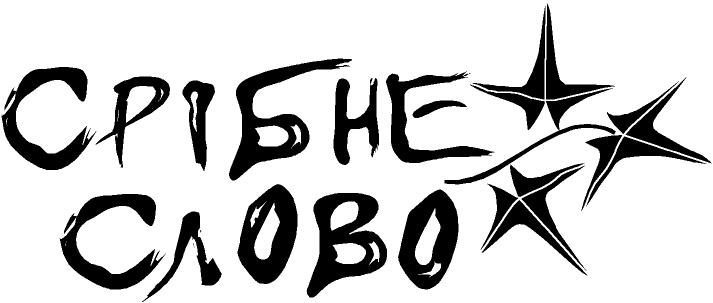- Рубрики
- Філософія, психологія, педагогіка
- Історія
- Політика, право
- Економіка
- Математика
- Фізика
- Хімія, хімічна технологія
- Біологія, валеологія
- Геодезія, картографія
- Загальнотехнічні науки
- ІТ, комп'ютери
- Автоматика, радіоелектроніка, телекомунікації
- Електроенергетика, електромеханіка
- Приладо-, машинобудування, транспорт
- Будівництво
- Архітектура, містобудування
- Мовознавство
- Художня література
- Мистецтвознавство
- Словники, енциклопедії, довідники
- Журнал "Львівська політехніка"
- Збірники тестових завдань
- Книжкові видання
- Наукова періодика
- Фірмова продукція
Микийчук Микола, Стадник Богдан, Яцишин Святослав, Луцик Ярослав. Розумні вимірювальні засоби для кіберфізичних систем.
УДК 536.5; 536.5.081
РОЗУМНІ ВИМІРЮВАЛЬНІ ЗАСОБИ ДЛЯ КІБЕРФІЗИЧНИХ СИСТЕМ
SMART MEASURING INSTRUMENTS FOR CYBER-PHYSICAL SYSTEMS
© Микийчук Микола, Стадник Богдан, Яцишин Святослав, Луцик Ярослав, 2016
Національний університет “Львівська політехніка”,
кафедра інформаційно-вимірювальних технологій,
вул. С. Бандери, 12, 79013, Львів, Україна,
(е-mail: slav.yat@gmail.com +38 068 50 473 68)
Праця спрямована на розвиток кіберфізичних систем, які стають ключовим
фактором повсякденного життя, а розумні вимірювальні прилади вважають невід’ємним компонентом цієї системи. Розглядається верифікація метрологічних підсистем за параметрами, що визначають керованість обладнання та процесів, розробленням, впровадженням та реалізацією конкретних метрологічних методів та інструментів, які успішно описуються термінами “апаратна підтримка,
основне і проміжне метрологічне програмне забезпечення”.
Ключові слова: розумні вимірювальні інструменти, мережі із розумних сенсорів, сенсорні розподілені мережі, основне і проміжне метрологічне програмне забезпечення, верифікація.
Работа направлена на развитие киберфизических систем, которые становятся ключевым фактором повседневной жизни, а умные измерительные приборы считаются неотъемлемым компонентом этой системы. Рассматривается верификация метрологических подсистем по параметрам, определяющим управляемость оборудования и процессов, путем разработки, внедрения и реализации конкретных метрологических методов и инструментов, которые успешно описываются терминами “аппаратная поддержка, основное и промежуточное метрологическое программное обеспечение”.
Ключевые слова: умные измерительные инструменты, сети из умных сенсоров, сенсорные распределенные сети, основное и промежуточное метрологическое программное обеспечение, верификация.
Smart measuring instruments are the prerequisite for CPS design as they constitute the essential units of information-measuring subsystems. There is a set of smart measurement instruments which is divided into the following subsets: smart sensors, smart transducers, their grids etc. that can be joined together in modern wireless sensor networks. The emerging field of cheap and easily deployed sensors offers an unprecedented opportunity for a wide spectrum of various applications. When combined, they offer numerous advantages over traditional networks. These include a large-scale flexible architecture, high-resolution data, and applica¬tion-adaptive mechanisms as well as a row of metrological specific features and performance (self-check, self-validation, self-verifica¬tion, self-calibration, self-adjustment).
Milestones in everyday work aiming to ensure reliable wireless sensors networks operation lie in the direction of functional and probabilistic verifications. We provide the software and middleware development aiming to reach predetermined behavior. The easiest way to achieve this may be demonstrated on the example of widespread wireless fire detector networks. They are characterized by a number of special algorithms directed on as fast as possible and accurate triggering and actuating the automation of higher level. So, it becomes necessary to research and implement the original operation algorithms for fire sensors and also check algorithms for periodic real-time software examination. Considering their structural complexity (pre¬sence of smoke and heat sensitive elements, various principles of elaboration of the received signals, their drift of charac¬teristics, and pollution of translucent elements, etc.) the develop¬ment of such algorithms is a daunting task. Herein, human life may be the price for a bug. Equally important seems to be probabilistic verification that is to boost the probabi¬li¬ty of reaching wireless sensors network declared goals (estimation of their chances being achieved).
Each network consists structurally of a large number (up to 103) of nodes which are individual sensors able to radio communicate with one or several neighboring units. The most common wireless sensors network is the fire alarm sensors network each branch of which has up to 26 sensors which was caused by limiting the length of microcontroller register. Topology of every network may differ: star, cluster tree, mesh, up to advanced multi-hop mesh network. Propagation technique between hops of network can be routing or flooding. Nowadays, problem arises to adapt traditi¬onal network topologies to contemporary communicating con¬ditions.
If a centralized architecture is used in a sensor network and the central node fails, then the entire network will collapse, however the reliability of sensor network can be increased by using distributed control architecture. Distributed control is used in such networks for the following reasons: sensor nodes are prone to failure; for better collection of data; to provide nodes with backup in case of the central node failure; resources have to be self -organized.
Aiming at the substantial development of Cyber-Physical systems, which are becoming a key element of everyday life, the smart measuring instruments are considered below as an indispensable part of entire systems. Verification of the metrological subsystems for parameters determining the controlled equipment and processes through the development, implementation and realization of specific metrology and standardization methods, instruments, that is successfully described by the terms “metrological hardware, software, and middleware”.
Smart sensors are supplied with digital information transmissive means by equipping them with built-in digital controllers to match the universal network interface or by combining technology of analogue and digital transmission in a single measuring channel. According to the structure all smart sensors are divided into 4 groups: sensors of centralized and decentralized types, as well as sensors with digital and analogue buses. According to correction methods the analogue interfaces with smart sensors are divided into the groups: with manual error correction, with auto correction of errors in analogue-digital form, and with digital correction of errors.
Specific measurement consists in evaluating MIs perfor¬mance reliability, trueness, and other metrological properties, due to the quality of a certain kind of metrological software, or the software linked to metrological features of MIs.
MI software metrological verification raises the problem of appropriate methods choice of software and middleware assessing, testing, and certifying. The metrological validation must result in confirmation or discarding of the studied ware following the requirements indicated in normative documents. Procedures and methods of checking software, and determining its disadvantages are considered below. Software study includes first of all the fulfilling the procedures of inambiguity ensuring the operating functions for generated data. Selection of the procedures is determined by regulation requirements, as well as by the software developer or the user’s desires to confirm its compliance with the target specification.
Key words: smart measuring instruments, smart sensors grids, distributed sensors networks,
metrological software and middleware, verification.
Література – 28.



















